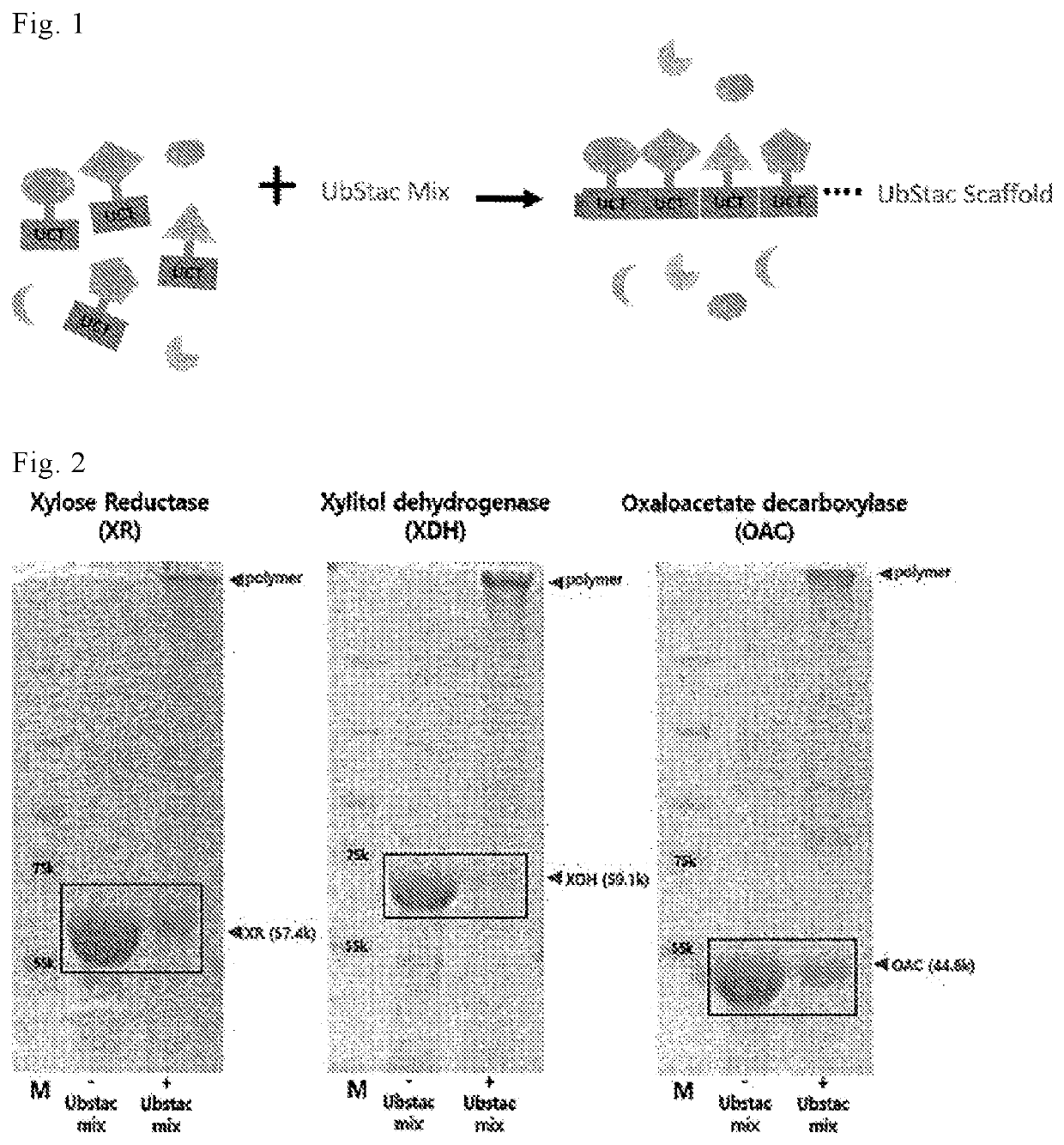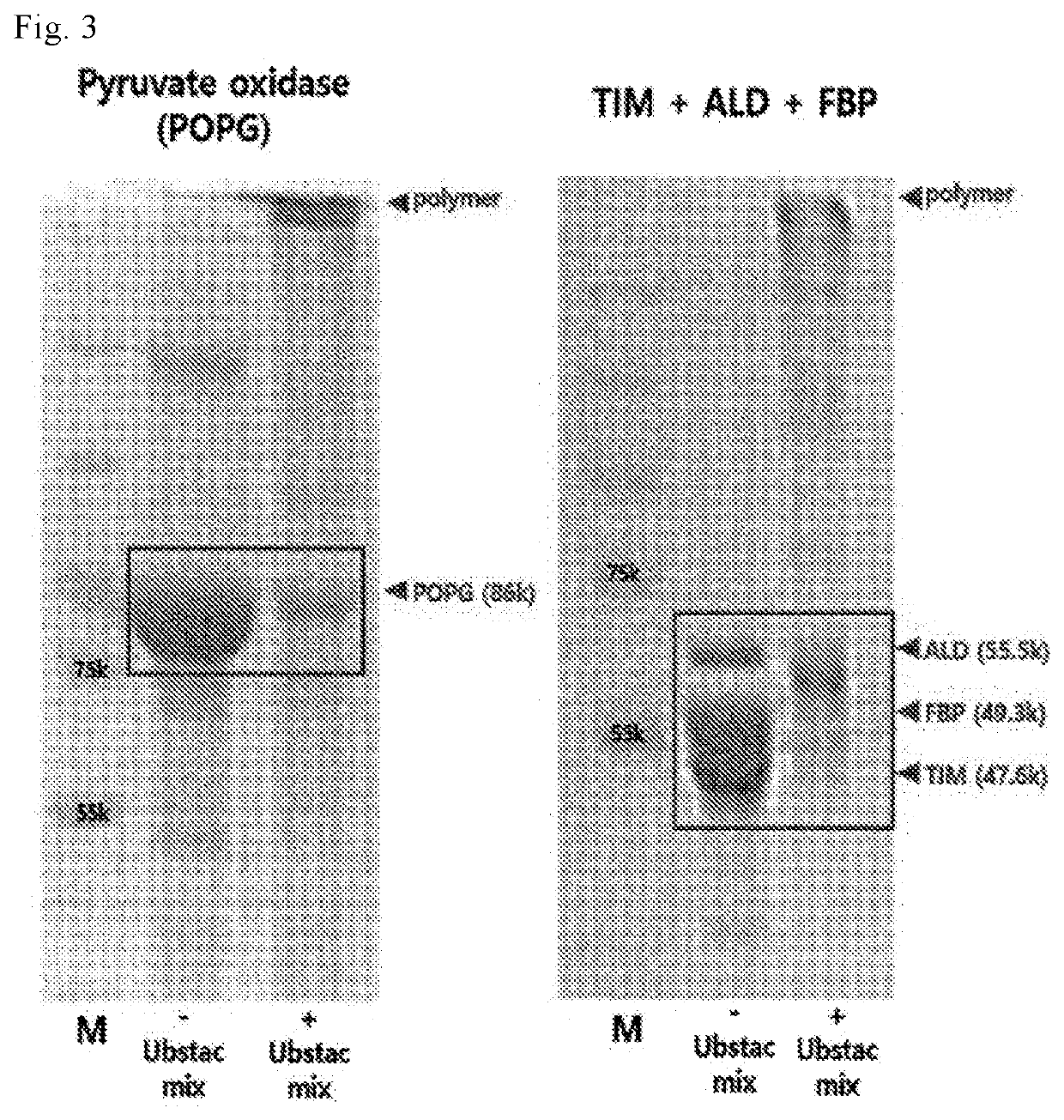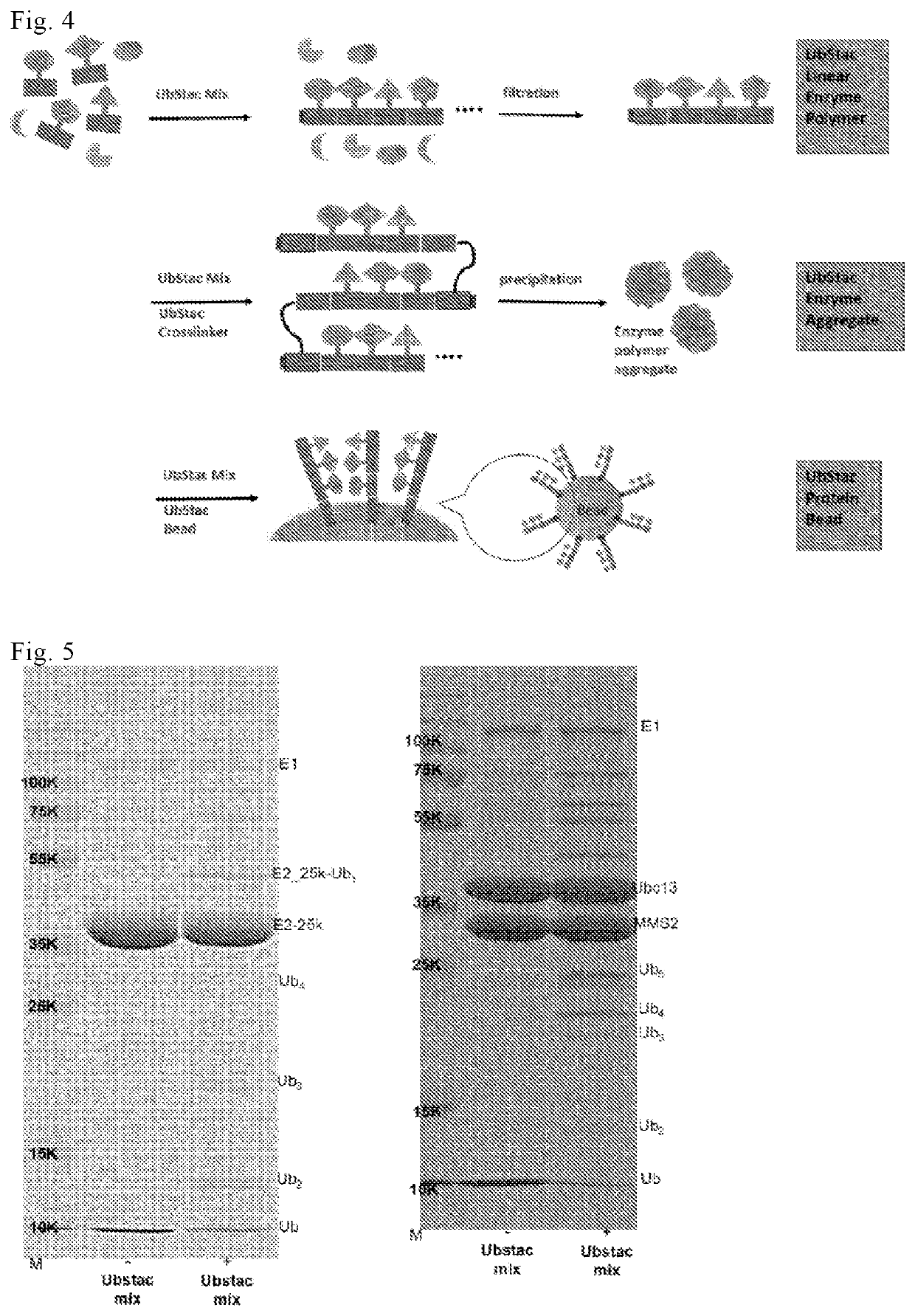Linear polyfunctional multimer biomolecule coupled to polyubiquitin linker and use thereof
a polyubiquitin linker and polymer technology, applied in the field of biomolecule preparation, can solve the problems of long development time, difficult to fuse two or more enzymes in reality, and difficult to fabricate a protein with such a structure, so as to improve the overall reaction efficiency and stability, and improve the stability of immobilized enzymes.
- Summary
- Abstract
- Description
- Claims
- Application Information
AI Technical Summary
Benefits of technology
Problems solved by technology
Method used
Image
Examples
preparation example
Preparation Example 1: Cloning, Expression and Purification of C-Terminal Fusion Protein
[0072]The gene encoding the UCT (Ubiquitin C-terminal Tag) (SEQ ID NO: 1) protein fusion used in the examples of the present invention was produced on request by Genscript Inc.
[0073]In order to prepare a Ub out gene construct that does not comprise a ubiquitin tag at the C-terminus, fast cloning system (Li C, Wen A, Shen B, Lu J, Huang Y, Chang Y (2011). Fast cloning: a highly simplified, purification-free, sequence- and ligation-independent PCR cloning method. BMC Biotechnol 11, 92.) was used. This method is a technology capable of linking genes (insertion, removal or substitution) in which if the PCR product is directly treated with only Dpn1 in the absence of a restriction enzyme and ligase, Dpn1 plays a role of a restriction enzyme and ligase through a mechanism that has not yet been identified along with polymerase. In this method, using a primer designed to overlap both terminus with Phusio...
preparation example 2
Linear Construct
[0075]In the present invention, the reaction for preparing a linear polyfunctional multimeric fusion protein was designated as Ubstac reaction, respectively. The Ubstac reaction (a total volume of 50 μL) was carried out in the Ubstac buffer (25 mM HEPES (Sigma-aldrich), pH 7.5, 50 mM NaCl, 4 mM MgCl2), and the Ubstac mixture for the Ubstac reaction (0.5 μM E1, M E2, 1 μM E3, 4 mM ATP) was added to the UCT protein fusion of the present invention to initiate the reaction. The ratio of protein used in the reaction was at a concentration of 10 uM to 20 uM UCT protein fusion per 1 uM E3 enzyme (a ratio of 1:10 to 1:20), which was a condition set for the purpose so that at least 10 fusion monomers form a linear polyfunctional multimer within 1 hour through the Ubstac reaction. The E1, E2 and E3 used in the present invention are as follows, respectively:
TABLE 2CategoryNameSEQ ID NOE1Yeast UBE1SEQ ID NO: 9E2Ubch5a [Homo sapiens]SEQ ID NO: 10(UniProtKB - P51668)Ubch7 [Homo sa...
preparation example 3
Using Only E1-E2 (E2 Platform)
[0078]The E2-Ubstac was prepared by using E2-25K (GenBank ID-U58522.1) (human E2), Ucb13 (yeast E2)-MMS2 (GenBank ID-U66724.1) (yeast ubiquitin-conjugating enzyme variant) (GenBank ID-U66724.1). The recombinant DNA plasmid was requested to be synthesized by Genscript. The E2-Ubstac reaction (a total volume of 50 μL) was carried out under a condition of the E2-Ubstac buffer (50 mM Tris pH 8.0, 5 mM MgCl2), and the E2-Ubstac mixture (1 uM E1, 10 uM E2, 4 mM ATP) was added to the free ubiquitin solution (20 μM) to initiate the reaction. The E2-Ubstac reaction was carried out by shaking at room temperature for 1 hour. The results are shown in FIG. 5.
PUM
| Property | Measurement | Unit |
|---|---|---|
| Temperature | aaaaa | aaaaa |
| Length | aaaaa | aaaaa |
| Length | aaaaa | aaaaa |
Abstract
Description
Claims
Application Information
 Login to View More
Login to View More - R&D
- Intellectual Property
- Life Sciences
- Materials
- Tech Scout
- Unparalleled Data Quality
- Higher Quality Content
- 60% Fewer Hallucinations
Browse by: Latest US Patents, China's latest patents, Technical Efficacy Thesaurus, Application Domain, Technology Topic, Popular Technical Reports.
© 2025 PatSnap. All rights reserved.Legal|Privacy policy|Modern Slavery Act Transparency Statement|Sitemap|About US| Contact US: help@patsnap.com



